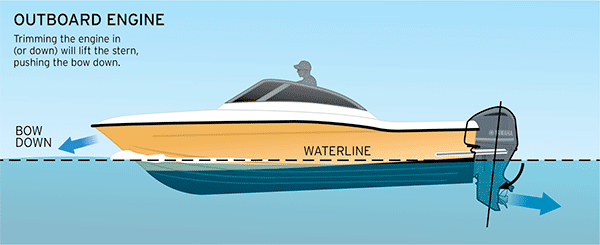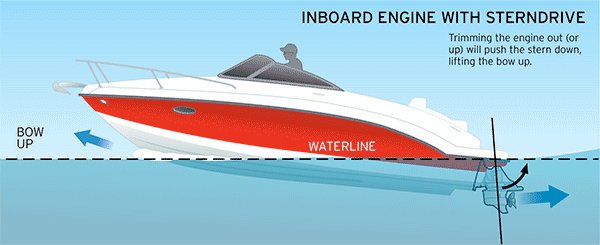How Is Your Trim?
- Rev Tech Marine
- Oct 30, 2018
- 2 min read
Updated: Dec 3, 2018

Using the engine's tilt function to properly trim a planing-hull boat while underway increases stability, fuel efficiency, and safety. Most boats handle best when running parallel with them at-rest waterline. Outboards and stern-drives feature a power trim adjustment that allows you to change the engine's angle of thrust by tilting it "out" or "in" in relation to the transom to maintain the proper running angle.
That adjust-on-the-fly capability is important because optimum trim position is determined by load and water conditions and will change as passengers move or seas vary. Experienced boaters learn to adjust their trim even as their craft powers onto plane, tweaking their engine's tilt angle to optimize their "hole shot" and quickly reach peak efficiency. A properly trimmed boat offers the most comfortable ride and the most efficient running angle — one that minimizes the amount of hull in the water creating drag — and maximizes your mileage.
Trimming the angle of the engine's thrust too far down (drive in) will force the stern up and cause the bow of the boat to drop. This is called plowing and can cause what is known as "bow steering" when the "vee"
of the bow digs into the water and makes the boat difficult to control. A boat with its thrust angle trimmed too far up (drive out) will cause the stern to squat and the bow to rise, creating problems with hull pounding and visibility forward. Extremes in either attitude can cause the boat to swamp.
Here are the steps to properly trim a planing-hulled powerboat:
With the engine in neutral, use the trim switch to tilt the drive down as far as it will go. Monitor the engine trim gauge (if present) or note the change in sound from the tilt motor that signals that the engine is trimmed fully down.
Put the engine into forward gear and throttle up steadily to cruising speed, noting the reading on your speedometer, GPS, or tachometer.
Using the trim switch, slowly tilt the engine up. You should feel the boat's attitude toward the water change, with a slight rise of the bow, a lift of the entire boat, and an increase in speed.
Continue to tilt the engine up until you note a slight drop in speed from the GPS or speedometer, a sharp rise in the engine's rpm, or until you hear your propeller begin to ventilate. The boat may also begin to "porpoise" or pound the water in a rhythmic pattern when the drive is trimmed too far up.
Tilt the engine down in small increments until the maximum speed/consistent rpm is again reached, and/or no ventilation is noted. At that point, the boat is properly trimmed and operating at maximum efficiency.
From there, you may want to adjust the trim to offer a more comfortable ride. Trimming the bow down a bit in a chop may decrease pounding from waves — but may also increase the amount of spray. Experience and experimenting with the engine's trim functions will soon show you the best attitude for your boat and its load on a given trip.




댓글